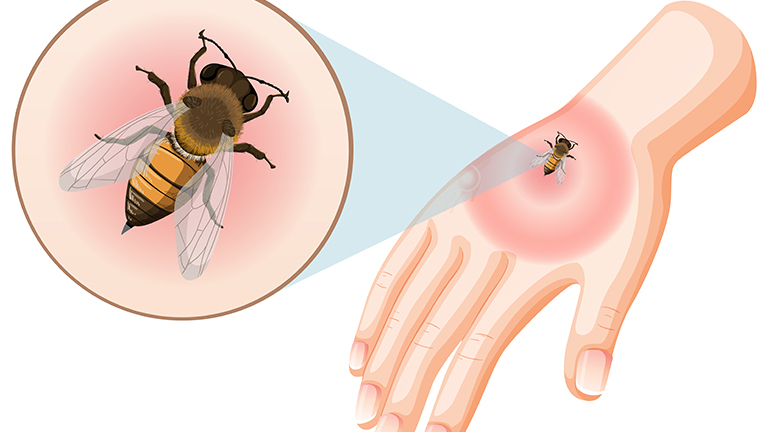Understanding the symptoms of Chagas disease, recognising early warning signs, and knowing the risk factors are essential for timely diagnosis and treatment. This comprehensive guide covers everything from acute and chronic symptoms to diagnosis, treatment options, prevention strategies, and global health implications.
Chagas disease, also known as American trypanosomiasis, is a serious parasitic infection caused by the protozoan Trypanosoma cruzi. Primarily transmitted through the bite of triatomine insects, commonly called “kissing bugs,” Chagas disease affects millions of people worldwide, especially in Latin America. However, due to migration and travel, cases are increasingly reported in the USA, UK, Canada, and other non-endemic countries.
One of the major challenges with Chagas disease is that many infected individuals remain asymptomatic for years, making early detection difficult. While the acute stage may present mild symptoms such as fever, fatigue, or localized swelling, the chronic stage can silently damage the heart, digestive system, and nervous system, leading to life-threatening complications.
Understanding Chagas Disease
What Causes Chagas Disease?
Chagas disease is caused by the parasite Trypanosoma cruzi, which infects humans primarily through the feces of triatomine bugs. These insects feed on human blood at night, usually biting the face or other exposed areas of the skin. After feeding, they leave behind parasite-infected feces that can enter the body through mucous membranes, broken skin, or even when a person scratches the bite wound.
Apart from insect bites, the disease can also be transmitted through:
- Blood transfusions with infected blood
- Organ transplants from infected donors
- Consumption of contaminated food or drinks
- From mother to child during pregnancy (congenital Chagas disease)
How Trypanosoma Cruzi Parasite Spreads
The parasite first enters the bloodstream and begins multiplying in various tissues of the body. During the acute phase, it spreads quickly, causing mild or non-specific symptoms that often resemble other illnesses. Over time, if untreated, the infection transitions into a chronic stage, where parasites remain hidden in body tissues and cause progressive damage to the heart and digestive system.
Early Symptoms of Chagas Disease
Common Signs in the Acute Stage
The acute phase of Chagas disease typically occurs within the first few weeks or months after infection. Symptoms can vary but are often mild, making them easy to overlook. Some of the most common early signs include:
- Fever and fatigue
- Swelling around the bite site (known as a chagoma)
- Swelling of one eyelid if the parasite enters through the eye (called Romaña’s sign)
- Enlarged lymph nodes
- Muscle aches and general body discomfort
- Skin rashes
These symptoms usually last for a few weeks to months and may resolve on their own, even without treatment. However, the parasite remains in the body, leading to long-term complications in many cases.
Subtle Symptoms Often Overlooked
Many people infected with Chagas disease do not realize they have the illness because the symptoms can mimic common viral or bacterial infections. In fact, 70% to 80% of infected individuals show no noticeable signs during the acute stage. This is why routine screening in endemic areas is essential.
[INSERT_ELEMENTOR id=”5792″]
Chronic Symptoms of Chagas Disease
Cardiovascular Complications
The chronic phase of Chagas disease can appear years or even decades after the initial infection. The most serious complications affect the heart. Symptoms include:
- Irregular heartbeat (arrhythmia)
- Shortness of breath during physical activity
- Chest pain and palpitations
- Swelling in the legs, ankles, and abdomen due to fluid retention
- Enlarged heart (cardiomegaly)
- Risk of sudden cardiac arrest
Digestive System Complications
Another major impact of chronic Chagas disease is on the digestive system. Parasite damage to the nerves controlling the digestive tract can lead to:
- Megaesophagus – an enlarged esophagus causing difficulty swallowing, regurgitation of food, chronic cough, and malnutrition
- Megacolon – severe constipation, abdominal swelling, and risk of bowel obstruction
Neurological and Systemic Symptoms
In rare cases, Chagas disease may also affect the nervous system, leading to neurological complications such as memory problems, difficulty concentrating, and weakness in the limbs. Some patients may also experience chronic fatigue, general weakness, and systemic inflammation.
Risk Factors and Vulnerable Populations
Who is Most at Risk?
Certain groups are at higher risk of contracting Chagas disease, including:
- People living in rural or impoverished regions of Latin America where triatomine bugs are common
- Individuals receiving blood transfusions or organ transplants without proper screening
- Babies born to infected mothers
- Travelers or migrants from endemic countries to non-endemic regions
Geographical Distribution and Migration Links
Although most cases are concentrated in Latin America, Chagas disease has spread to North America, Europe, and parts of Asia due to migration. The CDC (Centers for Disease Control and Prevention) and WHO (World Health Organization) estimate that millions of people worldwide are infected, making Chagas a global health challenge.
Diagnosis and Detection
Medical Tests for Early Diagnosis
Diagnosing Chagas disease in the acute stage requires laboratory tests that detect the parasite directly. Common tests include:
- Blood smears to detect parasites under a microscope
- PCR (Polymerase Chain Reaction) testing to identify parasite DNA
- Serological tests (ELISA, IFA) to detect antibodies against T. cruzi
Importance of Screening in Endemic Areas
Routine screening programs in high-risk populations are essential because most patients remain asymptomatic for years. Pregnant women, blood donors, and transplant recipients should be tested regularly in endemic countries to prevent silent transmission.
Complications and Long-Term Effects
How Chagas Progresses Without Treatment
If untreated, Chagas disease can lead to severe health consequences, including:
- Chronic heart failure
- Stroke or blood clot formation
- Irreversible digestive tract enlargement
- Malnutrition due to swallowing difficulties
Potential Life-Threatening Outcomes
Up to 30% of infected individuals develop life-threatening complications decades after the initial infection. The most common cause of death is sudden cardiac arrest due to arrhythmias.
Treatment Options for Chagas Disease
Available Medications
Two main medications are available for treating Chagas disease:
- Benznidazole – the most commonly prescribed drug, especially for children and young adults
- Nifurtimox – an alternative treatment, often used in adults
Both drugs are most effective during the acute stage and less effective in chronic cases, although they can slow disease progression.
Supportive Therapies and Lifestyle Adjustments
For chronic Chagas disease, supportive treatments may include:
- Pacemaker or defibrillator implantation for heart rhythm problems
- Medications to manage heart failure
- Surgery for digestive complications
- Nutritional support for swallowing difficulties
Prevention and Control Measures
Vector Control Strategies
The most effective prevention strategy is controlling triatomine bugs. This includes:
- Improving housing conditions to prevent bug infestation
- Using insecticides in high-risk areas
- Installing protective screens and bed nets
Food and Blood Transfusion Safety
- Ensuring food and drinks are properly cleaned and prepared
- Strict screening of blood and organ donations in endemic and non-endemic regions
Public Health Measures and Awareness
Awareness campaigns, improved healthcare access, and international cooperation are crucial in reducing the global burden of Chagas disease.
Living with Chagas Disease
Patient Stories and Case Studies
Many patients live for years without knowing they are infected. Some discover the disease only after developing serious heart or digestive problems. Access to regular checkups, early diagnosis, and lifestyle modifications can significantly improve quality of life.
Psychological and Social Impact
Chronic illnesses like Chagas can have psychological consequences, including anxiety, depression, and social isolation. Counseling and community support play a vital role in helping patients cope.
Global Perspective
Chagas in Latin America vs. Non-Endemic Regions
In Latin America, Chagas disease remains a rural health issue. However, in the USA, Canada, and Europe, most cases are linked to migration. While insect transmission is rare outside Latin America, blood transfusion and congenital transmission remain risks.
Efforts by WHO and CDC
- The WHO has launched initiatives to eliminate Chagas transmission in endemic countries through vector control and public awareness.
- The CDC continues to monitor Chagas disease cases in the United States, focusing on screening and early treatment.
Expert Opinion on Symptoms of Chagas Disease
According to leading infectious disease specialists, one of the greatest challenges of Chagas disease is its ability to remain asymptomatic for years, while silently damaging vital organs. Dr. Carlos Moreira, a cardiologist specializing in tropical diseases, emphasizes that up to 70% of patients show no noticeable symptoms in the acute phase, which makes early detection critical.
The CDC (Centers for Disease Control and Prevention) highlights that chronic Chagas disease is a major cause of non-ischemic cardiomyopathy in Latin America and increasingly recognized in the United States due to migration. Similarly, the World Health Organization (WHO) stresses that early screening in at-risk populations—especially blood donors, pregnant women, and people from endemic regions—can prevent severe complications.
Experts agree that recognizing early warning signs, such as fever, fatigue, and localized swelling (Romaña’s sign), followed by regular monitoring for heart or digestive symptoms, is the most effective way to reduce long-term health risks. Treatment with benznidazole or nifurtimox is most beneficial when started early, but even in chronic stages, proper management can significantly improve quality of life.
[INSERT_ELEMENTOR id=”5108″]
Conclusion
Recognising the symptoms of Chagas disease is essential for early intervention and effective treatment. While the disease often starts with mild or unnoticed symptoms, it can progress silently to cause life-threatening heart and digestive complications.
Global healthcare organisations emphasize the importance of screening, prevention, and patient education to reduce the disease’s impact. With timely diagnosis and treatment, many patients can avoid severe complications and live healthier lives.
Frequently Asked Questions (FAQ)
What is the first sign of Chagas disease?
The most common early sign is swelling at the bite site or around the eye, known as Romana’s sign.
Can Chagas disease be cured completely?
Treatment with benznidazole or nifurtimox can eliminate the parasite in most acute cases, but chronic cases may only be managed, not fully cured.
Is Chagas disease contagious from person to person?
No, Chagas disease is not directly contagious. It spreads through insect bites, blood transfusions, organ transplants, or from mother to child.
How long can Chagas disease stay dormant?
The disease can remain silent for decades, with symptoms appearing only in the chronic stage.
What organs are most affected by Chagas disease?
The heart, esophagus, and colon are the most commonly affected organs.
Can children get Chagas disease?
Yes, children can be infected at birth (congenital transmission) or through insect bites.
Is Chagas disease common in the USA and UK?
It is rare in these countries, but cases occur due to migration from endemic regions.


